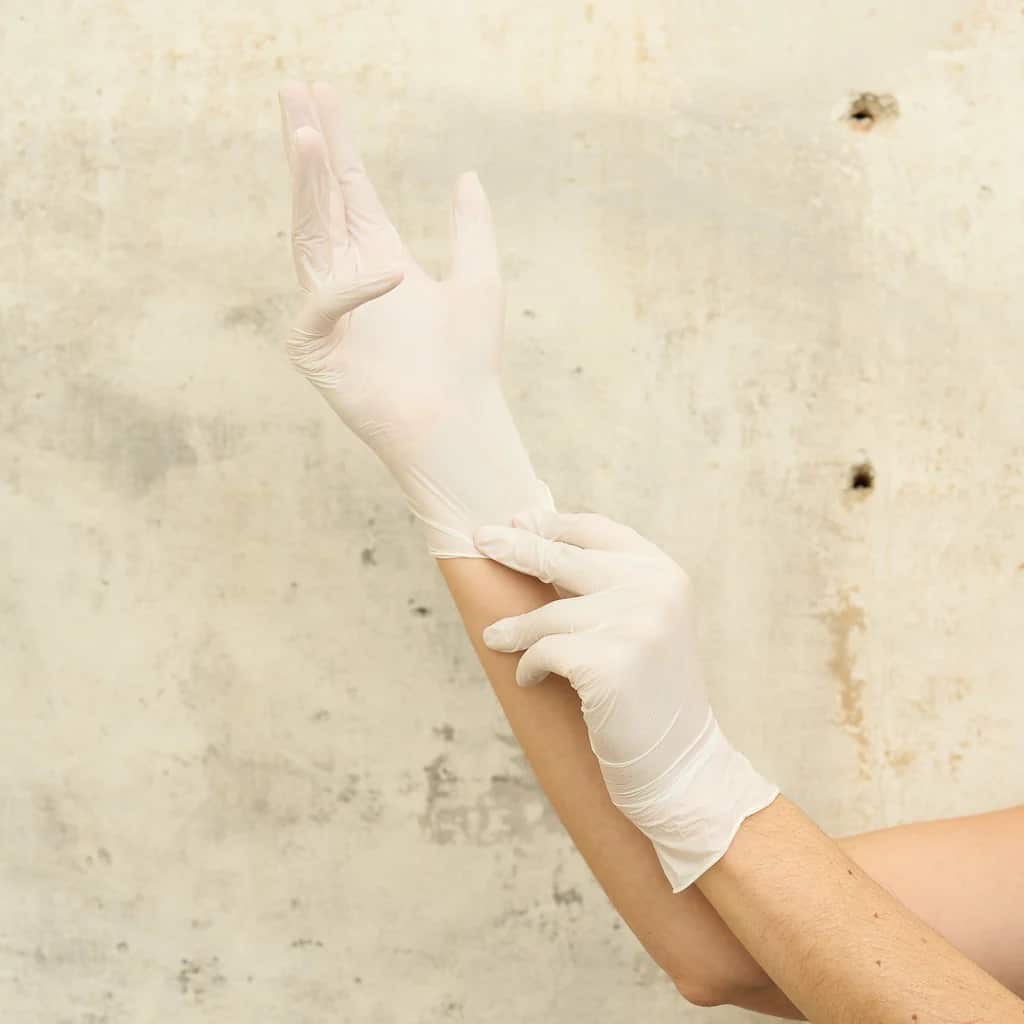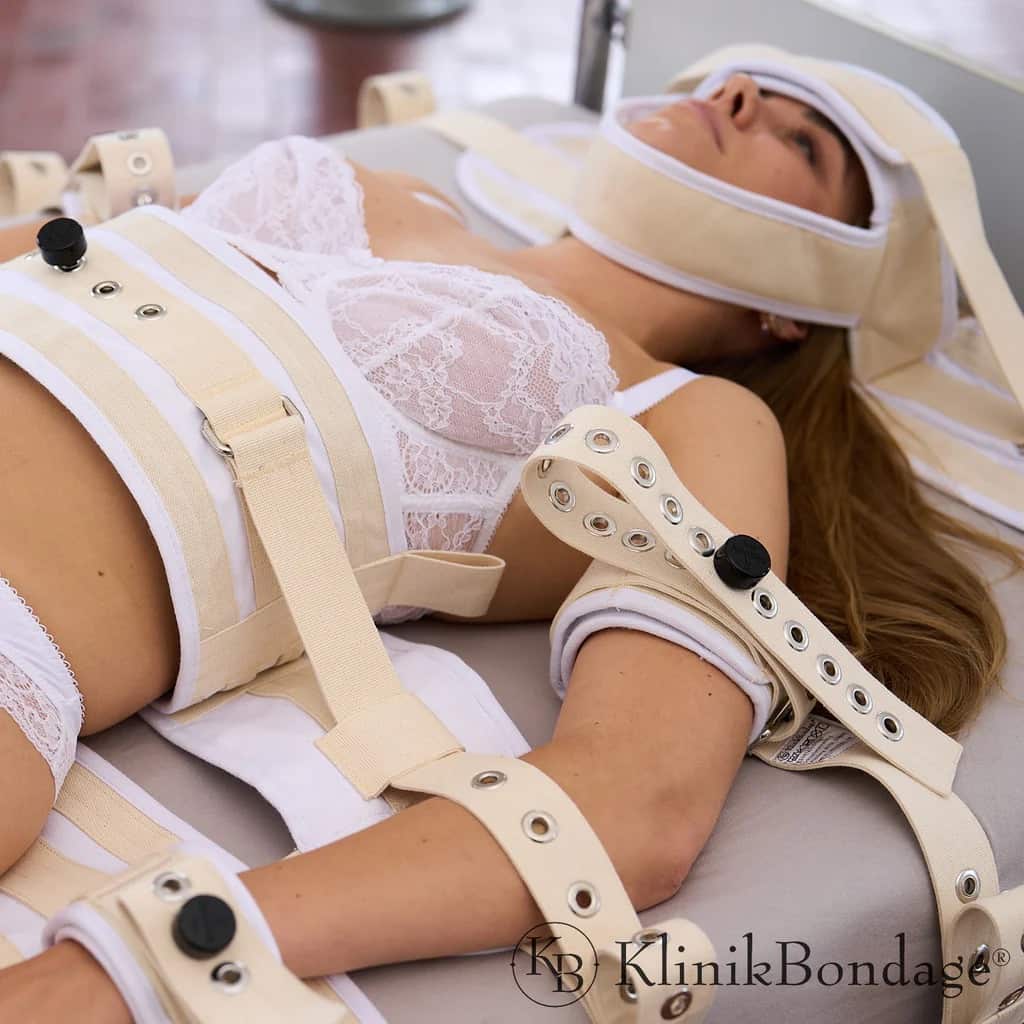What is medical play?
Medical play, or the “white area” in BDSM, stands for clinical eroticism, which refers to erotic games with a medical context. Since this area is associated with white rooms and a sterile look in everyday life, it i also known as “white BDSM”. Other terms include doctor games, clinical eroticism, or clinical sex.
As is often the case in BDSM, this term encompasses numerous practices, such as a preference for role-playing medical examinations, medical examination methods, or sexual fetishes for specific materials like latex or stainless steel.
In many BDSM studios, there is often a separate room for medical play, which may be equipped with items such as a gynecological chair or a wet area for activities involving golden showers, as well as needle play, enemas, or urethral stretching.
Why are people into medical play?
As is often the case in BDSM, these themes can be associated with fear or can develop into a fetish. This is because there is often a sense of powerlessness in relation to the “angels in white,” as they represent authority or power over patients in real life. They are also associated with care and trust.
However, most clinic BDSM practices put the Bottom in a submissive or “embarrassing” situation. As a patient, you have to submit and endure, according to the narrative. This is also the case with this type of play. But it is precisely this mixture of humiliation and degradation that makes it so appealing to most people. However, as mentioned above, the eroticism can also come from the materials used.
To enhance the feeling of loss of control, bondage is often incorporated, but with a medical context, such as using straitjackets or Segufix, a medical restraint system. Naturally, many of the medical play scenarios also include sadomasochistic elements to experience pleasure through pain.
Medical devices are typically designed for specific physical situations; they are intended to immobilize, stretch, clamp, or pierce the body. They are designed to serve a purpose beyond that of ordinary sex toys.
Medical play – why are people into it?
There are numerous practices that are carried out within the context of medical play. Here are a few examples:
- Needle play
- Stapling
- Enemas
- Sounding and urethral stretching
- Role-playing scenarios such as doctor visits or nurse and patient
- Mummification
- Dental eroticism
- Restraints (specifically Segufix, on medical stretchers, or straitjackets)
- Injection of saline solution
- Tunnel play, such as figging, applying burning or numbing creams, and similar activities
Medical play – what should you be aware of?
What effect should it have?
Since medical play is such a broad term, you should clarify beforehand what exactly you have in mind – whether it’s relatively harmless role-plays like the well-known “doctor games” or practices that could pose a risk to physical health, as mentioned above.
Clarify any illnesses and allergies
Sexually transmitted infections pose a risk in activities involving needles or other things that break the skin. Therefore, all involved parties should be tested for infectious diseases and know their status. Additionally, it should be clarified which medications are being taken, whether there are issues such as diabetes, circulatory or heart problems, and if these could pose a risk in combination with the desired practices, as well as if there are any allergies to specific materials or ingredients in disinfectants among the participants.
Only use medical-grade materials
Disinfectants, needles, gloves, enemas, and similar items should always come from medical suppliers. While some erotic shops offer materials labeled as medical play, these typically do not meet medical standards and should not be used for these purposes.
Additionally, the materials used should not be reused or must be properly cleaned, such as by boiling or disinfecting. Disposal, for example of needles, should ideally be done in a special container.
Thorough preparation is crucial
Both materials and hands, as well as the areas to be treated, must be thoroughly disinfected to minimize the risk of infection, ideally with an alcohol-based disinfectant that can be purchased from a pharmacy or trusted shop. The immediate environment should also be kept sterile and equipped with separate containers for storage and disposal.
Acquire knowledge of anatomy
For most practices within medical play, basic knowledge of anatomy is also necessary to keep the risk of serious injuries as low as possible. This is particularly important for activities like needle play, sounding, or bondage. Joints, large veins, or nerve pathways should generally be avoided without proper knowledge.
In any case, it is always worth attending a workshop to prepare for medical play. For practices such as catheter insertion or blood draws, guidance from trained professionals is essential.
Medical play – what to watch out for
As with all forms of edge play, you should have a long conversation beforehand about your limits and boundaries. This should not only cover physical factors as mentioned above but also ensure transparency about psychological issues such as trauma or anxiety.
Since medical play often involves extreme activities, aftercare is especially essential. Similar to knife play, it is important to gradually establish closeness, reassure that the fear was only part of the play, and attend to any potential injuries. It is best to have a concrete plan in place for aftercare. Additionally, have a phone readily available during the session so that emergency services can be called if needed.
Curious? Then take a look at Klinik Bondage! klinikbondage.com offers a wide selection for enthusiasts of white BDSM, clinic, and bondage play. We’re especially impressed by their exciting restraint sets.












